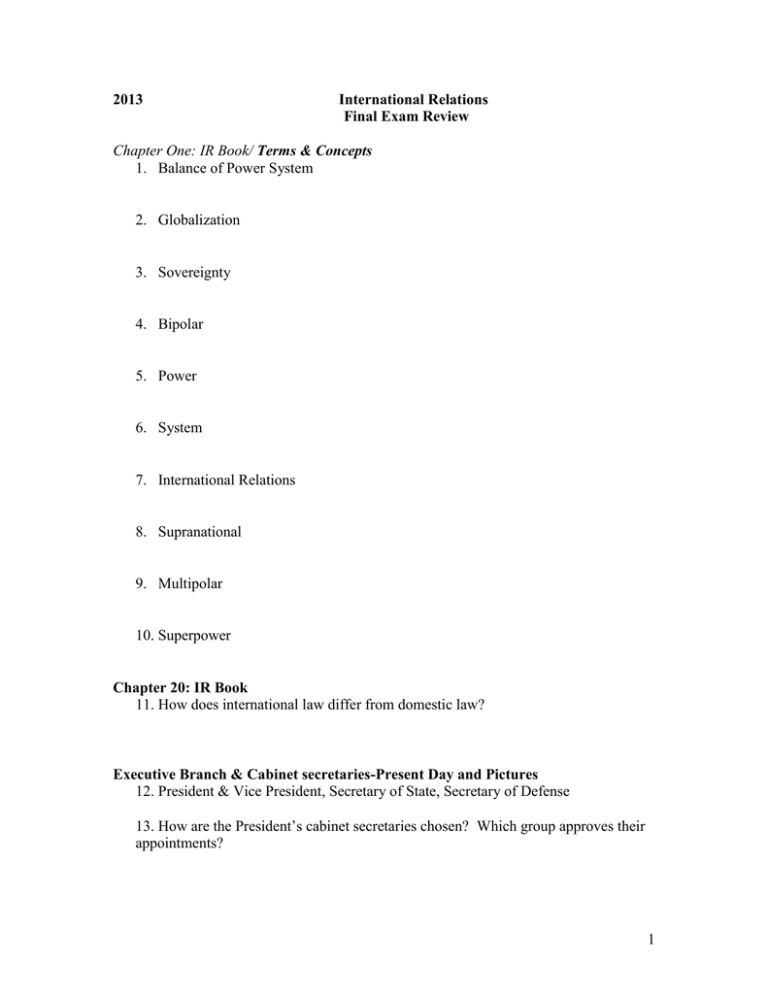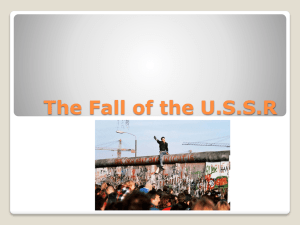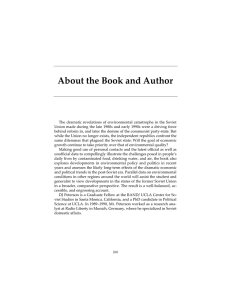1. Balance of Power System 2. Globalization 3. Sovereignty
advertisement

2013 International Relations Final Exam Review Chapter One: IR Book/ Terms & Concepts 1. Balance of Power System 2. Globalization 3. Sovereignty 4. Bipolar 5. Power 6. System 7. International Relations 8. Supranational 9. Multipolar 10. Superpower Chapter 20: IR Book 11. How does international law differ from domestic law? Executive Branch & Cabinet secretaries-Present Day and Pictures 12. President & Vice President, Secretary of State, Secretary of Defense 13. How are the President’s cabinet secretaries chosen? Which group approves their appointments? 1 Foreign Policy Terms 14. Interventionism vs. non-interventionism 15. Idealism and self- interest in foreign policy 16. Pentagon 17. Chief of Staff 18. Role of Congress in creating F. Policy 19. National Security Council 20. Unilateralism 21. Types of Power Economic Diplomatic Military Examples of Foreign policy U.S. Foreign Policy from 1945- 1990 - Cold War Beginning of Cold War- 1945-1975 22. Which countries were fighting the Cold War? 23. Policy of Containment & George Kennan 2 Causes of the Cold War in Europe: identify each. 24. What did the Soviet’s (Stalin) do in Eastern Europe that started the Cold War? 25. What did the Soviet develop that escalated the Cold War? 26. Domino Theory 27. NATO/Warsaw Pact 28. Joseph Stalin 29. Arms Race/Space race 30. What are common characteristics of a communist government? What might they censorship over? Who controls the economy (means of production)? Religion in a communist country? Propaganda Travel out of Soviet Union? New Cold War-1979-1990 Soviet Union & U.S. become enemies again! (Also applies to Terrorism Unit) The invasion of the Afghanistan by the Soviet Union marks the beginning of the New Cold War! 31. When did the Soviet Union invade Afghanistan, starting the New Cold War? 32. Why did Osama Bin Laden go to Afghanistan in the 1980s? What did he do during the Afghan Soviet War? 3 33. Did any other countries or U.S. allies get involved in the Afghan Soviet War? 34. Which country won the Afghan- Soviet War? 35. What was the effect of the war on the Soviet Union? 36. Name & cost of the American CIA operation in support of the Afghan fighters? 37. Why did a Civil War break out after the end of the Soviet-Afghan War? 38. Describe the rule of the Taliban in Afghanistan after they won the Civil War? 39. How and when did the rule of the Taliban end? Terms 40. Soviet Vietnam 41. Forbidden Zone Terrorism Unit 42. Oklahoma City bombing 43. Timothy McVeigh 44. Types of terrorism 4 45. Osama Bin Laden 46. Most of the hijackers on 9/11 came from which Middle Eastern country? 47. Why did the U.S. invade Afghanistan in 2001? 48. Why did the U.S. invade Iraq in 2003? 49. When and why did the 1st Persian Gulf War begin? Nuclear Weapons 50. Why did the U.S. develop and drop the atomic bomb at end of WWII? 51. Define nuclear proliferation 52. Define IAEA & main purpose 53. Non-proliferation Treaty (NPT) 54. Article V of the NPT Treaty 55. Which countries today possess nuclear weapons? 56. Which countries today are known but are unannounced possessor of nuclear weapons? 57. Which countries are considered to be the Axis of Evil? Why? 5 United Nations 58. Purpose of the U.N. 59. General Assembly: describe, # of countries, vote etc. 60. Security Council: permanent members vs. non-permanent, terms, veto power etc. 61. General Secretary: requirements, how elected & who is GS today 62. Location of U.N. 63. What are U.N. troops called and where troops come from? 64. There are no international police or international governments that make law. So what is international law based on? 65. Who are the blue helmets? Where do the troops come from when a “mission” is approved by the U.N.? 66. UN Peacekeeping is very difficult. What can be said about a peacekeepers weapons and ability to use weapons? 67. Who were the Janjaweed in Sudan? How were they paid for their services? World Leaders- images on test, countries and main events associated with leader 68. Kim Jong IL 69. Deng Xiaoping 70. President Amadinejad 71. Joseph Stalin 72. Fidel Castro 6 73. Saddam Hussein 74. Mikhail Gorbachev 75. Osama Bin Laden 76. Hu Jintao 77. U.S. President & V.P. (present) 78. U.S. Secretary of State & Defense (present) Middle East 79. Which countries in the M.E. are monarchies? 80. Which countries is a theocracy? 81. Which countries are democracies? 82. Which type of government is the most common in the M.E.? 83. Which predominantly Muslim country in the M.E. is secular democracy and has outlawed “religious clothing”? 84. What are the four main ethnic groups in the M.E.? Which is the most common? 85. What religions exist? Which is most common? 86. In the Middle East, are most Muslims Sunni or Shiite? 87. What are the two “most conservative” countries in the M.E. today? 7 Rise of China as a superpower 88. Type of government today? 89. Type of economic system today? 90. Who is the leader of China today? 91. Which leader made economic reforms in China? 92. Why China is called the “Workshop of the World”? Rise of India as a world power 93. When was India partitioned? What new country was established by the partition? 94. What type of government does India have today? 95. When and what is India’s “New Liberalization Plan”? Arab Spring/ Arab Revolutions 96. When and where did the Arab Spring uprising start? 97. What are the two main reasons for all of the revolutions/uprisings in the Middle East? 98. Who was the Egyptian President that was ousted? 99. Who was the Libyan President that was ousted? 100. Who was the Tunisian President that was ousted? 8 101. Which revolution turned into an on-going Civil War? 102. In which country, did the Security Council of the UN intervene and establish a no-fly zone? Four Maps on the Final Exam Africa Middle East South Asia Africa Ten questions on foreign policy & U.S. President. Review in class together. 9 10






